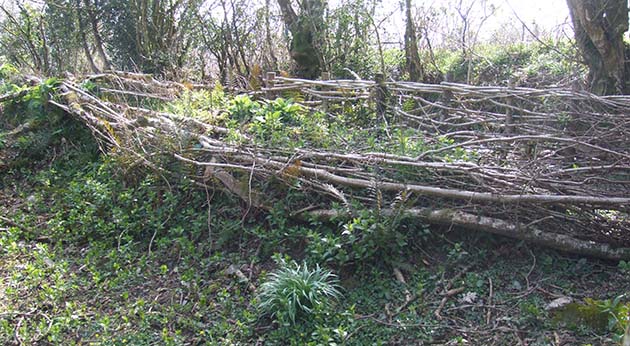Here in rural Devon, most of the field boundaries are traditional “Devon banks,” which are banks of earth and stone originally capped with hedges, in order to contain livestock.
Down in our valley, many of the banks are mediaeval. The parish boundary just down the lane, dated by counting the number of tree species that have colonized what was originally holly, probably dates right back to Saxon times. But up here on the hill most of them, including the boundaries of my own property, probably date to around 1820, when the common-land “turbary” was enclosed: a mere two hundred years.
Sadly, fewer and fewer banks are now actively managed, and on a good many of them the hedges have become trees, and other species have invaded – stately beech, hazel, holly, ash, sprawling oaks and more. Where stock is still kept in fields, the under-manned farms usually “tend” the hedges by powering through once a year with a tractor and a flailing machine, which simply mashes the top-growth as the trunks get wider year on year:
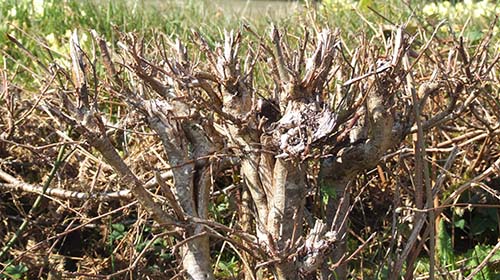
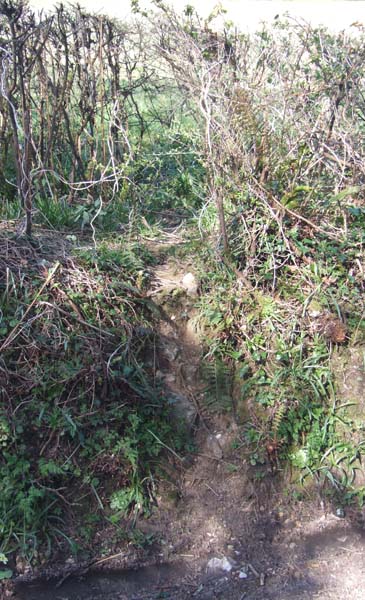
The result is an entirely non-stock-proof barrier. This picture shows a gap in daily use by badgers and deer, and where those go, sheep could as well. Further along the lane, where a beech hedge is taller, these gaps make quite a picturesque archway for adventurous lambs.
In fact around our way, for reasons unclear, the farmers like a crew-cut look, cropping the hedge to the level of the bank itself, so that even a determined cow could easily scramble out over the top of the “hedge”:
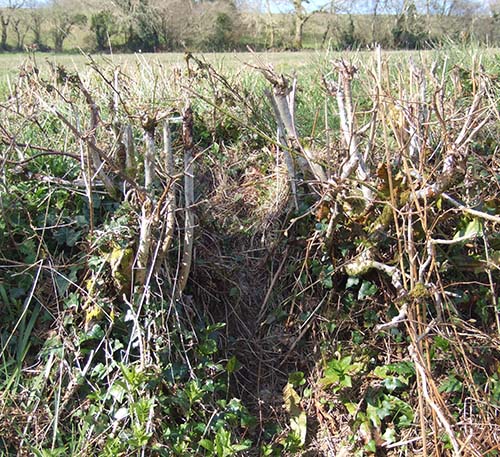
Accordingly when stock is in the field, the farmers have to deploy electric fencing as well, through which enterprising beasts usually find a path, so that on a couple of occasions we’ve discovered flocks of sheep grazing our front garden, and once a herd of rather fine cattle.
‘Twas not always thus. Back in the day, every farmer’s winter work included hedging and ditching, the latter of which might, if continued now, prevent storm water washing away the tarmac in the local lanes and leaving large potholes.
Just how effective Devon banks can actually be, when maintained as originally intended, is shown by one local landowner, who has been trying out the old techniques on a small length of long-neglected bank he recently acquired. The site once had a cottage on it, which fell out of use and into ruins probably soon after the First World War, when labour became short.
But even from trees left unkempt for many decades, he has begun to create a stock-proof barrier that is actually a living thing, and shows how well the old guys understood nature, as compared to the butchers in tractors today. The next picture shows a short length of this year’s work:
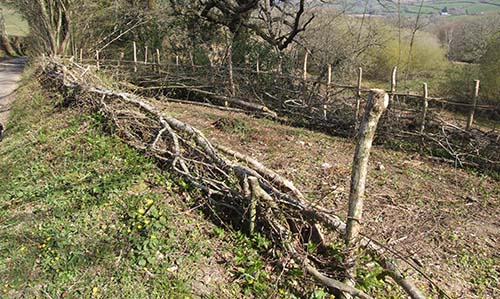
The closer stretch consists almost entirely of living branches, layers bent from the limbs and trunks of trees that were there, and are now felled. You can see how it is held in place by forked hazel pieces driven into the ground. Behind is an entirely new barrier, still consisting of layered, living branches, interwoven between posts cut from the felled trees.
This picture shows how the tree is cut, and the remaining thin layer of bark and sapwood bent over to form this organised tangle:
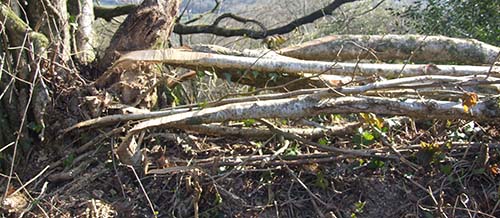
You’d think this operation would kill the trees, but as you can see from last year’s work further along, a mass of vertical shoots has soon sprung out:
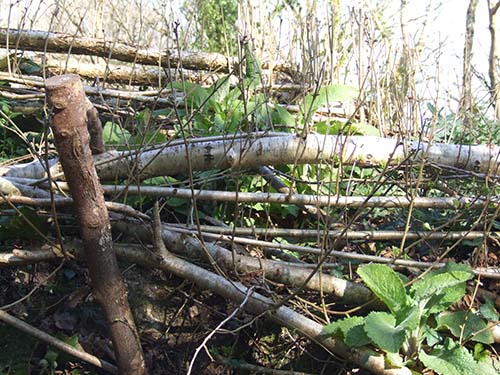
Even at this early stage, no livestock is going to get through that in a hurry. What amazes me (and perhaps, what the ecologically-minded landowner wanted to show) was just how quickly this work can be done using modern power saws. The stretch shown in the original picture above, and more, was done in a day, from a line of trees to an effective hedge. If a few more farmers learned the old skills, not only would fewer sheep stray around the lanes, but enclosed land would be opened up to light and new plant-growth, whilst the banks themselves would form a much richer haven for wildlife.
Our ancestors knew a thing or two that we appear to have forgotten.
